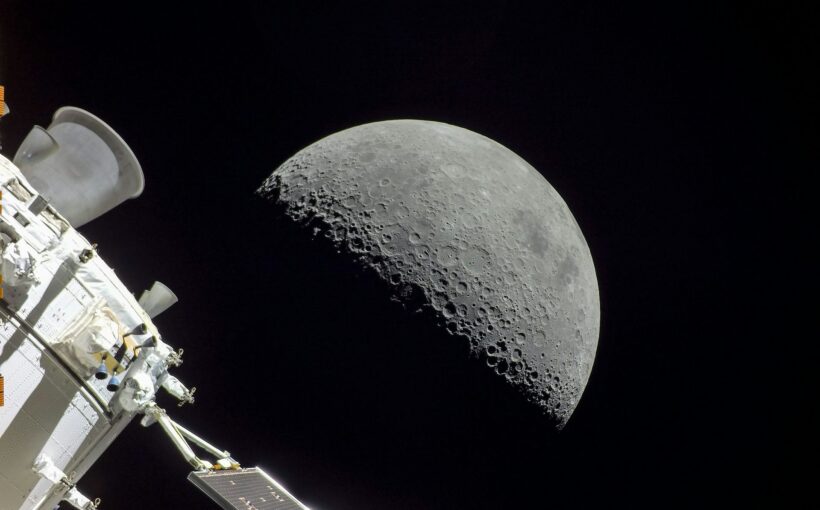
A 2019 Time magazine cover portrayed four astronauts running towards the Moon. Pictured alongside the headline “The Next Space Race”, one of the astronauts carried an American flag, one carried a Chinese flag and the other two belonged to space companies owned by billionaires: Elon Musk’s SpaceX and Jeff Bezos’ Blue Origin.
Until recently, it seemed as if the US and SpaceX were set to win this race to return to the Moon with Nasa’s Artemis programme. But a number of setbacks have called that into question. And Blue Origin, China and other countries and companies are continuing their own lunar efforts.
On January 9 2024, Nasa announced that it was delaying the Artemis 2 mission, the first crewed flight of the Space Launch System (SLS) and the Orion capsule – the vehicles built to send astronauts back to deep space. The flight would slip from late 2024 to no earlier than September 2025. This was due to some safety issues that need to be fixed on Orion.
Consequently, Artemis 3, which is supposed to involve the first crewed lunar landing since 1972, will take place no earlier than September 2026. Artemis 3 is to use SpaceX’s Starship orbiter as the lander for two crew members. This mission is set to put the first woman and the first person of colour on the lunar surface.
A non-American crew member could also walk on the Moon by 2030, highlighting the fact that Nasa has involved international partners in the Artemis venture. Up until now, just 12 humans have set foot on the Moon. All of them have been male and all have been American.

However, the Starship orbiter, crucial to these aims, has experienced problems. A second test launch for the rocketship-like orbiter atop its huge booster rocket back in November 2023, was spectacularly destroyed eight minutes and six seconds after lift off.
It will have to be ready to go by 2026. But, before then, SpaceX will have to demonstrate that it can refuel in orbit and then land Starship on the Moon without crew.
At the same time, however, Blue Origin is also working on a lander, called Blue Moon. Blue Moon is due to be used as the Moon landing craft for the Artemis 5 and 6 missions in 2029 and 2030.
Time will tell which lander can actually be ready for use first. But competition is always a good stimulator, and it could accelerate achievements.
Commercial companies supporting Nasa in the Artemis program will have to put a lot of attention into what to do and when. The lives of crew members are at stake here, so missions have to proceed in a safe and sustainable manner.
As with Apollo, Nasa is also trying to use the program to inspire the next generation of scientists, engineers and mathematicians. Baby boomers like myself are very proud to be “Apollo kids” who were inspired to study scientific subjects by those momentous achievements – particularly the first steps on another world, viewed through black and white TVs in July 1969.
International competition
China is also preparing itself, together with several other countries including Russia, to develop a lunar base for humans, called the International Lunar Research Station (ILRS). Beijing and its partners will include also private sectors players and governmental and non-governmental organisations, with an organisational scheme which is a first.
The Chinese program’s first human missions to the lunar surface are expected by 2030. Among the sites where they want to land is the Moon’s south pole. Nasa also wants to land here, but few of Beijing’s choices are in overlap with the locations selected for Artemis.
The south pole is a target for both the US and China because countries want to extract the water ice that’s hidden in craters there. This water could be used for life support at lunar bases and to make rocket fuel, helping bring down the cost of space exploration.
Space programs are never on time, and postponements are normal. Space agencies are
more cautious nowadays, even more than before, because few tragedies we experienced in the past are obliging them to think very carefully before launching humans in space.
Safety of the crew is mandatory, and it must be always the first priority. So, if this is the reason why we have to wait a bit more before few human beings, after decades, will walk again on the Moon, I’m happy to wait for it.
Going to space has never been easy, as demonstrated by several uncrewed missions to the Moon over the last 12 months – both governmental and commercial – which didn’t make it. But perhaps it’s better we fail now while we are preparing for the new phase of humanity’s history.
The Moon will soon experience human beings on its surface again, working and living on a regular basis. But when humans go back there, this time it will be to stay.
![]()
Simonetta Di Pippo does not work for, consult, own shares in or receive funding from any company or organisation that would benefit from this article, and has disclosed no relevant affiliations beyond their academic appointment.



